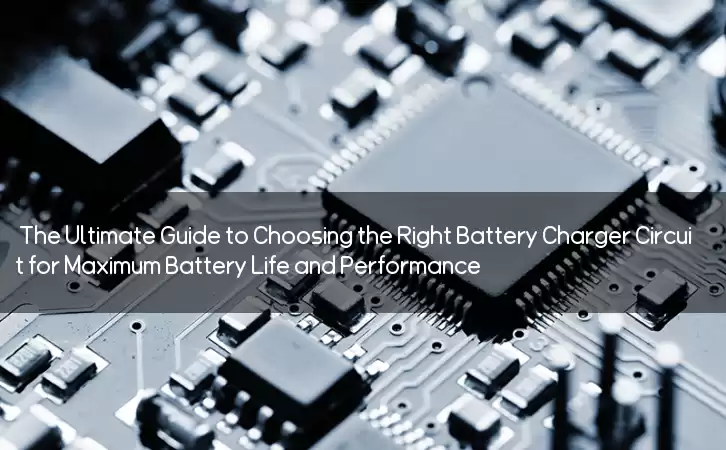Information Center
The Ultimate Guide to Choosing the Right Battery Charger Circuit for Maximum Battery Life and Performance
Published:2023-06-23 20:40:31 Author:Green WCND Views:33A battery charger circuit, also known as a charge controller, is a device that controls the amount of current and voltage that is supplied to a battery to charge it. The charging process is very important because it determines the lifespan and performance of the battery. If the battery is overcharged, it can lead to premature wear and tear, reduced capacity, and even damage to the battery cells.

There are different types of battery charger circuits available, each with its own specifications, capabilities, and limitations. The most common types are linear chargers, switch-mode chargers, pulse chargers, and solar chargers. Each of these types has its own unique benefits and drawbacks.

Linear chargers are simple and inexpensive, but they are not very efficient and can waste a lot of energy as heat. They are best suited for low power applications, such as charging small batteries or powering electronic gadgets.
Switch-mode chargers, on the other hand, are more complex and expensive, but they are very efficient and can convert the input voltage into the required charging voltage and current. They are ideal for high power applications, such as charging electric vehicles or powering industrial equipment.
Pulse chargers are another type of battery charger circuit that uses a pulsed voltage waveform to charge the battery. They are known for their ability to rejuvenate and extend the life of old and worn out batteries. However, they are not suitable for all types of batteries, and they can be quite noisy and generate unwanted electromagnetic interference.
Solar chargers are becoming increasingly popular, especially for portable and off-grid applications. They use solar panels to convert the energy from the sun into electricity, which is then used to charge the battery. They are environmentally friendly and can be very convenient for camping, hiking, and other outdoor activities.
When designing or selecting a battery charger circuit, it is important to consider several factors, such as the type of battery, its capacity and voltage rating, the charging time, the input voltage and current, and the temperature and safety features. A good charger should be able to provide a steady and stable charging voltage and current, without overcharging or undercharging the battery. It should also have protection against short circuits, overvoltage, overcurrent, and overheating.
In conclusion, a battery charger circuit is a critical component of many electronic and electrical systems that rely on batteries for power. Choosing the right type and design of charger can ensure the optimal performance and longevity of the battery, as well as the safety and reliability of the overall system.
For golf course managers, ensuring smooth and efficient operations is crucial for providing a memorable experience for golfers and maintaining the reputation of···
A battery tester ensures golf course cart batteries operate efficiently and reduces downtime through the following ways:I. Precise Battery Condition DiagnosisOp···
Battery testers significantly enhance the work efficiency of automotive maintenance technicians through several key ways:I. Rapid Diagnosis of Battery IssuesBat···
Battery testers play a crucial role in automotive battery production lines, significantly enhancing efficiency through highly automated testing processes and mu···





